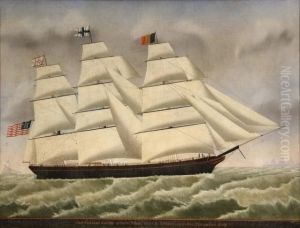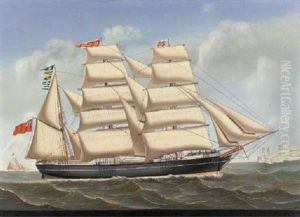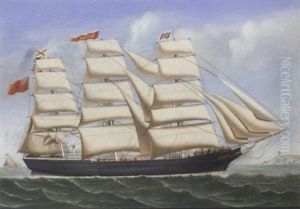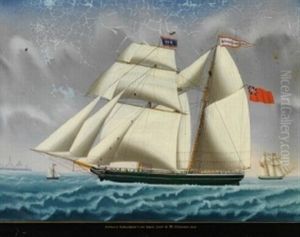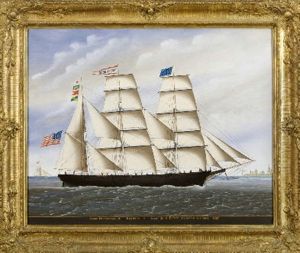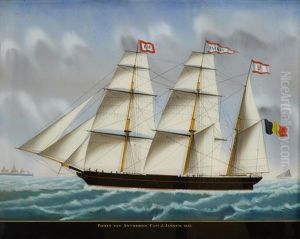Carolus Ludovicus Weyts Paintings
Carolus Ludovicus Weyts, also known as Charles-Louis Weyts, was a 19th-century Belgian painter known for his maritime scenes, landscapes, and depictions of historical events. Born in 1808 in Bruges, Belgium, Weyts developed an interest in art at a young age. His work is characterized by a romantic style that was popular among many European artists of the time. He often drew inspiration from the sea and the bustling port activity, which is evident in many of his paintings.
Weyts received his formal art education at the Academy of Fine Arts in his hometown of Bruges. He was a student of the noted Belgian painter Joseph-Benoît Suvée, who was an influential figure in Weyts’s early development as an artist. Suvée's guidance helped shape Weyts’s technical skills and instilled in him a passion for historical accuracy and detail, which would become hallmarks of his work.
Throughout his career, Weyts exhibited his work in various salons and galleries, gaining recognition for his artistic ability. His paintings often reflect the maritime culture of Belgium and the Netherlands, capturing ships, naval battles, and coastal scenes with a dramatic and often poetic quality. His work not only served as a celebration of the sea but also as a documentation of the maritime history of his time.
Unfortunately, Carolus Ludovicus Weyts's life was relatively short-lived, as he died in 1855. Despite his early death, his contributions to Belgian art were significant, and his paintings remain a testament to the rich maritime heritage of the region. Today, Weyts's works can be found in various art collections and museums, where they continue to be appreciated for their historical value and artistic beauty.


